#meylişah
Text

Meylişah/ Melylikaya/Mehlika. Her date of birth is unknown. She was of russian origin.
Originally she was a slave of Kuyuncu Mehmed Pasha and after his death, Pasha's wife presented her to chief black eunuch of the Imperial Harem, Haci Agha. The agha treated her like his own daughter and he decided to freed her. When Meylişah and Osman II met, she was a free woman. There is no record of their marriage but according to islamic law, a freed slave woman could not be a concubine again. On 20th October 1621, Meylisah gave birth to sehzade Ömer, the only known child of Osman II. Unfortunatelly, in February 1622 Ömer tragically passed away. According to venetian bailo, Osman Il and Meylisah together with prince Ömer and with other female family members were watching a re-enactment of the sultan 's Polish campaign organized as a big show at the palace. One of the acemioglan (boys considered to join the Janissaries) playing the role of a Polish solider discharged the gun and caused a ricochet.Osman blamed Meylisah for that accident and refused to see her ever again. She lost her ranks and titles. She disappers from Harem records with Ömer's death. Nothing more is known about her.
youtube
#meleksimasultan
8 notes
·
View notes
Text


Meylişah Hatun foi a consorte favorita de Osman II — embora não tenha recebido o posto de Haseki — e mãe de Şehzade Ömer, o filho mais velho do sultão.
12 notes
·
View notes
Photo

Family of Mustafa I and Osman II. So I was like “I dont make trees for these sultans because it would be too short”, however in the end I decided to make it, because I included all sultans so far, so I must include them as well!
#mustafa i#osman ii#sehzade ömer#şehzade ömer#ömer#omer#ayse sultan#ayşe sultan#ayse#ayşe#meylişah#meylisah#meylisah hatun#Meylisah sultan#meylişah sultan#meyl-i Şah#meyl-i sah#akile#akile hatun#Pertev Paşa
26 notes
·
View notes
Photo








Meylişah Hatun, also called Meleksima, Meylikaya or Mehlika, was Osman II's favourite consort and the mother of Şehzade Ömer. She was Russian and had originally been a slave of Grand Vizier Kuyucu Murad Paşa. When he died, his wife presented her to the Chief Black Eunuch Haci Mustafa Ağa, who treated her like a daughter and ultimately decided to free her. When Osman II met her she was a free Muslim woman and therefore could not be one of his concubines. According to the Venetian ambassador in Istanbul, the sultan legally married her. She had the sultan's ear and, after the birth of Şehzade Ömer, she became even more influential as she had become the mother of the successor to the throne. On 5 February 1622, the four-month-old prince tragically died: Osman II had organized a re-enactment of his Polish campaign for his favourite consort and the other female members of the dynasty when one of the actors accidentally fired a shot. It is not clear exactly how Şehzade Ömer died: some say that the stray bullet hit him; others maintain that it was the noise which killed him. In any case, Meylişah was blamed for her son's death and stripped of her titles and rank; Osman II refused to see her again and she effectively disappeared from historical records. -- requested by anon
source: Fikri Çiçek, An Examination of Daily Politics and Factionalism at the Ottoman Imperial Court in relation to the Regicide of Osman II (r. 1618-22)
232 notes
·
View notes
Text
Portrait of Osman II's consorts / II. Oszmán ágyasainak portréja
Haseki Ayşe Sultan
Ayşe appears in the harem records in 1619 as the Haseki Sultan of Osman II. We don't know anything about her age or origin. We don't know if she had any children. Some consider her the mother of Şehzade Ömer, but it was probably not her but another concubine who gave birth to the only son of Osman. After the death of Osman Ayşe moved to the Old Palace and lived the rest of her life there. Her last mentioning in the harem records is from 1640, so we can assume that she died in the second half of her thirties, in 1640 or 1641.

Meyl-i Şah Hatun
Meyl-i Şah or Meleksima was also the concubine of Osman II, but did not have the rank of Haseki. She was probably the mother of Prince Ömer. Based on this, the only thing we know about her was that when Osman returned to the empire from his campaign in early 1622, he invited Meyl-i-Şah to Edirne along with the young Prince Ömer. In Edirne, Osman held a huge ceremony in which dressed soldiers played some details of his victorious (nope) campaign. The young couple also took the barely a few months old baby to the ceremony. It is not known exactly what happened, but Prince Ömer lost his life during the ceremony. Some say a stray bullet hit the prince, others said the prince had a heart attack from the sound of firing cannons. And Osman, of course, blamed the child's mother for the events, depriving her of all her titles and exiling her. Some believe that Meyl-i Şah could not even return to Istanbul with Osman, but remained in Edirne for the rest of her life. Others say she lived the rest of her life in the Old Palace and died around 1638. However, the latter is quite unlikely that while Ayşe is mentioned in the harem records, Meyl-i Şah is never mentioned by anyone. With the death of Prince Ömer, she completely disappeared from history.
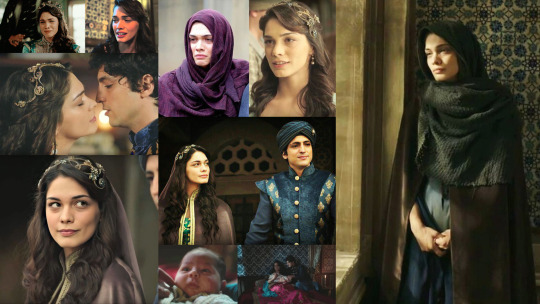
Akile Hatun
Akile Hatun was the daughter of Seyhülislam Esad Efendi and was born around 1607. Her mother was the daughter of the mufti of Murad III and Mehmed III, so she came from an influential family. One of Akile’s brothers, Ebusaid Mehmed Efendi, also became Seyhülislam during his lifetime.
Osman II and Seyhülislam Esad Efendi did not really like each other. First, Seyhülislam after the death of Ahmed I did not support the accession of Osman II but Mustafa I so that the fratricide could be finally ended. Later, he regularly disagreed with the Sultan's decisions, which were otherwise almost without exception terrible decisions. One special case of this was when he refused to release a fetwa for the execution of Osman's half-brother, Prince Mehmed. Osman wanted to make the rebellious Seyhülislam surrender by marrying his daughter. Osman expected that Seyhülislam would not dare to oppose him anymore, as the fate of his daughter depended on the sultan. The Seyhülislam did not want to give his daughter to the Sultan, but Osman eventually forced him until the Seyhülislam accepted Osman's offer and allowed the marriage. By the way, almost everyone in Osman’s divan was against marriage, especially knowing that Osman forced it out from Seyhülislam.
Osman gave 600,000 golds as dowry. The wedding took place in March 1622 amid huge celebrations. According to the Venetian ambassador, after three days of celebration and fireworks, Akile was taken to the Old Palace, where the wedding was consummated. The next day, Osman greeted his pashas and let them kiss his hands to congratulate him. Other historians say Akile never entered the harem of Topkapi Palace or Old Palace, as it would have been a huge humiliation for a free-born Muslim woman to do so. According to those the marriage has not been consummated either. However, knowing the nature of Osman, it would not be surprising if the former was true. Some think Akile Hatun had two children with Osman, Zeynep, and Mehmed. However, it is not very likely that Akile would have been the mother of the two children who otherwise died in infancy.
After Osman's death, Akile remarried. This time, Ganizade Nadiri Efendi, a poet, became her husband. The exact date of the wedding is unknown, but this marriage did not last long either, for the poet died in 1627 after half a year of dying. From then on, we don't know anything about Akile.
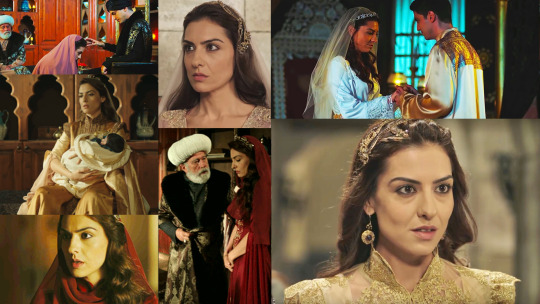
Anonymous concubine or second wife who may never existed
While Osman's marriage to Akile Hatun is unquestionable, it is not so with his second marriage. According to some, Osman also married Pertev Pasa's granddaughter in February 1622. According to the date, by the way, she would be the first wife, not Akile... Pertev Pasa's granddaughter, in addition to being a descendant of an influential pasha, could also be linked to the dynasty, as Pertev Pasa married Aya Hatun, Şehzade Mehmed's (1521 -1543) concubine. Aya Hatun was the mother of Hümaşah Sultan, and thus Hümaşah was actually the aunt of Pertev Pasa and the granddaughter of Aya Hatun. Historians don't agree if the marriage ever happened or not. Maybe Osman just wanted it but never succeeded. Anyhow, we know nothing about this woman.
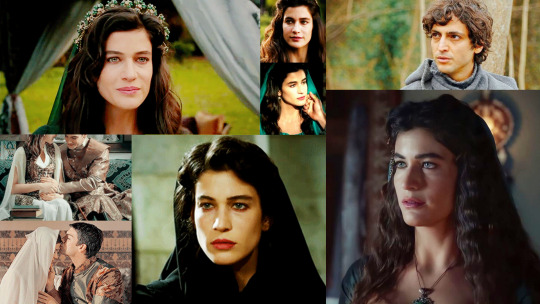
Used sources: F. Çeçik - An Examination of Daily Politics and Factionalism at the Ottoman Imperial Court in Relation to the Regicide of Osman II (r.1618-22); G. Piterberg - An Ottoman Tragedy: History and Historiography at Play; N. Sakaoğlu - Bu Mülkün Kadın Sultanları; C. Finkel - Osman’s Dream: the History of the Ottoman Empire; Y. Öztuna - Sultan Genç Osman ve Sultan IV. Murad; L. Peirce - The imperial harem; G. Börekçi - Factions and favourites at the courts of Sultan Ahmed I (r. 1603-17) and his immediate predecessors
* * *
Haseki Ayşe Sultan
Ayşe 1619-ben tűnik fel a hárem jegyzőkönyvekben, mint Oszmán Haszeki szultánája. Nem tudunk semmit koráról, származásáról. Nem tudjuk, hogy voltak e gyermekei. Egyesek őt tartják Şehzade Ömer édesanyjának, ám valószínűleg nem ő, hanem egy másik ágyas adott életet Oszmán egyetlen fiának. Ayşe Oszmán halála után a Régi Palotába költözött és ott élte le hátralévő életét. 1640-ben szerepel utoljára a hárem jegyzőkönyvben, így feltételezhetjük, hogy harmincas éveinek második felében, 1640-ben vagy 1641-ben hunyt el.

Meyl-i Şah Hatun
Meyl-i Şah vagy Meleksima szintén II. Oszmán ágyasa volt, azonban nem viselte a Haszeki rangot. Valószínűleg ő volt Ömer herceg édesanyja. Ez alapján az egyetlen amit tudunk róla, hogy amikor Oszmán 1622 elején visszatért a birodalomba hadjáratáról, Edirnébe hívatta Meyl-i-Şaht az ifú Ömer herceggel együtt. Edirnében Oszmán hatalmas ünnepséget rendezett, melyen beöltözött katonák játszották el győzedelmes (nem) hadjáratának néhány részletét. Az ünnepségre a fiatal pár magával vitte az alig néhány hónapos csecsemőt is. Nem tudni, hogy pontosan mi történt, de Ömer herceg az ünnepség során életét vesztette. Egyesek szerint egy eltévedt golyó találta el a herceget, mások szerint a dördülő ágyúk hangjától kapott szívrohamot a herceg. Oszmán pedig természetesen a gyermek anyját hibáztatta az eseményekért, így minden rangjától megfosztotta és száműzte. Néhányan úgy vélik, Meyl-i Şah nem is térhetett vissza Isztambulba Oszmánnal, hanem élete végéig Edirnében maradt. Mások szerint a Régi Palotában élte le élete hátralévő éveit és 1638 körül halt meg. Utóbbit azonban meglehetősen valószínűtleníti, hogy míg Ayşe szerepel a hárem jegyzőkönyvekben, addig Meyl-i Şaht senki sem említi sosem. Ömer herceg halálával teljesen eltűnt a történelemből.

Akile Hatun
Akile Hatun a Seyhülislam Esad Efendi lánya volt és 1607 körül született. Édesanyja III. Murad és III. Mehmed müftijének lánya volt, tehát befolyásos családból származott. Akile egyik bátyja, Ebusaid Mehmed Efendi szintén Seyhülislam lett élete során.
Oszmán szultán és a Seyhülislam nem igazán kedvelték egymást. Először is a Seyhülislam I. Ahmed halála után nem II. Oszmán, hanem I. Muszafa trónralépését támogatta, hogy a testvérgyilkosságot végérvényesen befejezhessék. Később pedig rendszeresen nem értett egyet a szultán - egyébként szinte kivétel nélkül hibás - döntéseivel. Egyik speciális ilyen eset volt, mikor megtagadta, hogy fetwát adjon ki Oszmán féltestvére, Mehmed herceg életének kioltására. Oszmán a rebellis Seyhülislamot úgy kívánta megregulázni, hogy feleségül veszi a lányát. Oszmán azt várhatta a násztól, hogy a Seyhülislam majd nem mer vele ellenkezni, hiszen tudni fogja, hogy lánya sorsa a szultántól függ. A Seyhülislam nem akarta odaadni lányát a szultánnak, azonban Oszmán végül addig erőszakoskodott, míg a Seyhülislam elfogadta Oszmán ajánlatát és kénytelen-kelletlen engedélyezte a frigyet. Egyébként Oszmán divanjában szinte mindenki a házasság ellen volt, különösen tudva, hogy Oszmán csak kierőszakolta azt a Seyhülislamból.
Oszmán 600 000 aranyat adott hozományként. Az esküvőre 1622 márciusában került sor hatalmas ünnepségek közepette. A velencei követ szerint három napos ünneplés és tűzijáték után Akilét a Régi Palotába vitték, ahol elhálták a nászt. Másnap pedig Oszmán fogadta a pasáit, hogy azok gratuláljanak neki. Más történészek szerint Akile sosem lépett be a Topkapi Palota vagy Régi Palota háremébe, hiszen ez egy szabad születésű muszlim nőnek hatalmas megalázás lett volna. Azok szerint akik ezen a véleményen vannak, a házasságot el sem hálták. Ismerve azonban Oszmán természetét nem lenne meglepő, ha előbbi lenne igaz. Néhányan Akile Hatunnak tulajdonítják Oszmán két gyerekét, Zeynepet és Mehmedet. Azonban nem túl valószínű, hogy Akile lett volna az édesanyja a két gyermeknek, akik egyébként csecsemőkorukban meghaltak.
Oszmán halála után Akile újraházasodott. Ezúttal Ganizade Nadiri Efendi, költő lett a férje. A frigy pontos dátuma nem ismert, azonban ez a házasság sem tartott sokáig, a költő ugyanis 1627-ben fél év haldoklás után elhunyt. Innentől nem tudunk Akiléről semmit.

Névtelen ágyas avagy a második feleség, aki talán sosem létezett
Míg Oszmán házassága Akile Hatunnal megkérdőjelezhetetlen, nem így van második házasságával. Egyesek szerint Oszmán feleségül vette Pertev Pasa unokáját is 1622 februárjában. A dátum szerint egyébként akkor ő lenne az első feleség, nem Akile... Pertev Pasa unokája azon túl, hogy befolyásos pasa leszármazottja volt, a dinasztiához is köthető volt, hiszen Pertev Pasa azt az Aya Hatunt vette feleségül, aki Şehzade Mehmed herceg (1521-1543) ágyasa volt. Aya Hatun volt Hümaşah szultána édesanyja, és így tulajdonképpen Hümaşah a nagynénje volt Pertev Pasa és Aya Hatun unokájának. A történészek nem értenek egyet abban, hogy valóban megtörtént e a frigy vagy sem. Lehetséges, hogy Oszmán csupán akarta azt, de nem sikerült elérnie. Akárhogy is, nem tudunk semmit a nő életéről.

Felhasznált források: F. Çeçik - An Examination of Daily Politics and Factionalism at the Ottoman Imperial Court in Relation to the Regicide of Osman II (r.1618-22); G. Piterberg - An Ottoman Tragedy: History and Historiography at Play; N. Sakaoğlu - Bu Mülkün Kadın Sultanları; C. Finkel - Osman’s Dream: the History of the Ottoman Empire; Y. Öztuna - Sultan Genç Osman ve Sultan IV. Murad; L. Peirce - The imperial harem; G. Börekçi - Factions and favourites at the courts of Sultan Ahmed I (r. 1603-17) and his immediate predecessors
#Osman II#haseki ayşe#ayse sultan#akile hatun#meleksima#meylişah#Meylisah sultan#pertev paşa#aya hatun#hümasah#Sehzade mehmed#şehzade ömer#seyhülislam esad efendi
31 notes
·
View notes
Text
Portrait of Osman II / II. Oszmán portréja
Origin and childhood
Osman was born in November 1604 as the son of the young Sultan Ahmed I and one of his concubines, Mahfiruze Hatun. The birth of Osman was a huge event for the empire, for before his birth everyone feared that Sultan Ahmed might not be able to have a child because of his poor health and young age. After the birth of Osman, Ahmed personally received congratulations from the pashas and they could kiss his hand. The pashas normally only had the opportunity to do so during religious holidays. The birth of Osman is interesting in other ways as well, for he was the first first-born prince to be born in the imperial capital ever.
His mother, Mahfiruze, was not Ahmed’s favorite concubine, however, she also seems to have given birth to more than one child. Most sources consider Prince Bayezid, who was born in 1612, to be Osman's younger brother. Shortly after the birth of Bayezid, their mother died. Ahmed's favorite concubine and Haseki, Kösem Sultan, tried to take the orphaned Osman under her wings. She also regularly took Osman along with her own son, Mehmed, for carriage rides, money distributions, and to the Old Palace when she traveled there to visit Safiye Sultan, Ahmed’s grandmother. It was noted that during these carriage rides, Osman showed himself to the commoners with great pleasure and distributed money to those in need. Kösem's motivation was not just to help and educate the orphaned Osman. Kösem wanted to protect her own sons by raising Osman as if he was her own child. She hoped Osman would not execute his half-brothers later if they grew up together. Kösem's idea was realistic and maybe she would have succeeded, but Ahmed intervened. The sultan did not like the relationship between his consort and his son, for he thought it was indecent and he knew the nature of Kösem anyway, so he tried to keep his son away from her. From then on, Osman could not meet Kösem the way he did, he could not spend time with her, only his governess and teacher stood by him.

The change
Sultan Ahmed had always been in poor health, but by the second half of the 1610s, it had deteriorated further until he died in November 1617. Osman was then 13 years old then. He was barely younger than Ahmed when he ascended the throne in 1603, so the idea of him being sultan was not terrible. However, there was one factor that spoke out against him. The law of fratricide has for centuries obligated sultans to execute their own brothers when they got the throne in order to maintain order. However, Sultan Ahmed did not execute his half-brother, Prince Mustafa. This was very pleasing to the commoners and statemen, as they were more and more disgusted by the law of fratricide in the past decades. Precisely because of this, it was in everyone’s interest to start a new succession-system instead of inheriting from father to son. According to this, the eldest living prince must sit on the throne and the others must not be executed. And this eldest prince was not Osman, but Ahmed's younger brother, Mustafa. Mustafa, however, was mentally ill, so he was not really fit to rule either.
However, it was not only because of his age that Osman was an unsuitable candidate. Being an orphan and too young to have his own supporters, he was very isolated, he had no influential supporters. In contrast, Prince Mustafa had his mother, his brother-in-law, who were influential. And there was also the eldest son of Kösem Sultan, Mehmed, Kösem was the late Sultan’s favorite concubine, was influential and popular. And Osman was alone with his governess and teacher among such notable people with his 13 years. No matter how much his governess wanted and whether Osman tried to honor her with the rights of a mother, she could not become influential enough to help the prince on the merits.
Religious leader Seyhülislam Esad Efendi and the chief eunuch of the palace, Haci Mustafa Agha, finally convinced the people, divan and military officers that the best decision was to put the oldest prince, Mustafa, on the throne, as this could finally change the succession-system and forever end the law of fratricide. It seems that Osman never forgave this decision for the Seyhülislam and the eunuch.

Confusing enthronement
We know little about what happened to Osman during Mustafa's short reign. What is certain is that, along with his brothers, he also lived in seclusion at Topkapi Palace. Sultan Mustafa was completely unfit to rule, his mental illness becoming more and more serious so that eventually more and more people began to conspire against him. It was Haci Mustafa Agha, who had previously worked on his enthronement, who once again wanted to became a kingmaker. Mustafa Agha before a divan meeting locked Sultan Mustafa up in his apartment and immediately hurried for Prince Osman and introduced him to the divan as the new sultan. The coup succeeded, Mustafa was dethroned and locked up, and Osman became a sultan. Although it was Haci Mustafa who actually put Osman on the throne, the prince did not forgive him for not standing by him after Ahmed's death and immediately exiled the eunuch to Egypt, where he died a few years later.
Osman finally became sultan on February 26, 1618, during the aforementioned divan meeting. Adapting to the new traditions, he did not try to execute his uncle or brothers. Of course, he would not have had a chance to do so even if he would want, as he still did not have influential supporters. As an orphan, Osman could in fact only rely on his teacher, but Ömer Efendi was not particularly popular either in the divan or among the people. Osman had to make himself popular and gain supporters as soon as possible.
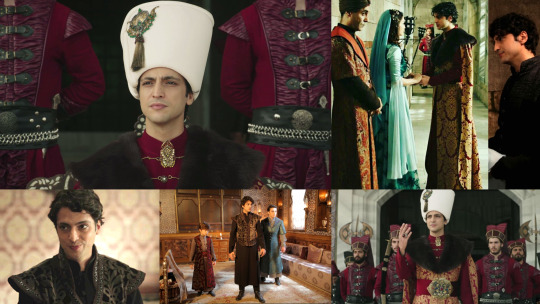
His reign
Osman's first activity was revenge and he also made efforts to stabilize the empire. At the same time as Haci Mustafa Aga was exiled, Osman also took away some of the duties of the Seyhülislam (and transferred most of it to his teacher, Ömer Efendi), severely restricting his activities. Osman's reason for it was the fact that Esad Efendi supported Mustafa over him in 1617. A similar fate befell former Grand Vizier Kayseriyeli Halil Pasha, second Vizier Sofu Mehmed Pasha, who were both dismissed. Although Davud Pasa, the brother-in-law of Sultan Mustafa, escaped the complete demotion, Osman was constantly hardened his life simply because of his kinship. These activities are a good illustration of the shortcomings of Osman. His decisions seem more like the sudden determination of an offended teenage boy than the deliberate decisions of a sultan.
It was also from his age and orphanhood that he had naively fallen into some people's trap. This is how former Admiral Güzelce Ali Pasha eventually became Grand Vezier. Osman did not even notice that the Pasha actually ruled in his place, Osman's words sounded only as an echo of Ali Pasha's words. Güzelce Ali Pasha also succeeded in removing Osman's teacher, Ömer Efendi, from the capital whom Osman held in high esteem and beloved. Ömer Efendi could not return from Mecca until March 1621, when Güzelce Ali Pasha eventually died.
At first, Osman was not a clearly hated sultan because, although many did not like him, the soldiers had not yet decided whether they liked him or not. The soldiers were impressed that Osman himself wanted to lead a campaign, but his inexperience, young age, and the heavily vacated treasury also nuanced this decision. It was planned to start the campaign in the spring of 1621. However, Osman did not feel his sovereignty strong enough to leave the capital while his younger brother, Mehmed (the son of Kösem), remains there. Osman (or his supporters) feared that in his absence, Kösem Sultan would put Prince Mehmed on the throne. A solution to this could have been if Osman had taken Mehmed with him to the campaign, but he had chosen a much more drastic solution. In January 1621 (exactly 400 years ago) he executed Mehmed. The resurgence of fratricide shook the empire greatly. Almost without exception, everyone condemned and even called the execution of the innocent prince a cowardly decision. Prior to the murder, Osman, of course, sought permission from Seyhülislam Esad Efendi, as it was necessary for all such executions. Esad Efendi called the execution unlawful, refusing to legalize it, no matter how violent Osman wanted it. Eventually, the sultan went to the second-highest religious nobility, the bribeable Kemaleddin Efendi, who gave permission for the execution.
To grow Osman's troubles a mini ice age reached the capital at this time, Istanbul was weighed down by 15 days of heavy snowfall. Thousands died as a result of the extraordinary weather, the Bosphorus was completely frozen, it was possible to cross between Beşiktaş and Üsküdar on foot. The people clearly saw the wrath of Allah behind the meteorological event, they believed that Allah wanted to punish Osman in this way for killing his innocent brother. Osman’s guilt in Mehmed’s murder is undoubted, but it is not clear whether it was his own idea or he was convinced by someone. The latter version is maybe more plausible, based on the fact that Osman himself regularly visited Kösem Sultan in the Old Palace after his accession, so he tried to maintain a good relationship with her, and Kösem tried not to annoy the young sultan to protect the lives of her own children.
Osman tried to gather supporters for himself at all costs, even by violance. He also made an attempt to do so when he married Seyhülislam Esad Efendi's daughter in March 1621, despite his father's displeasure. Through Akile Hatun, Osman thought he could chain the Seyhülislam to himself. This was especially needed after the execution of Prince Mehmed. Others believe he wanted to imitate his namesake, Osman I, the founder of the Ottoman House, who also married a daughter of a mufti. Their marriage was probably purely political and Akile never entered the harem. Others say the wedding was consummated and they had two children, Zeynep and Mustafa. Either way, this marriage was unusual, as the sultans had not married free women for centuries, especially those from such an influential family. Although Osman's goal with marriage was to consolidate his power, his popularity was greatly diminished by his marriage.
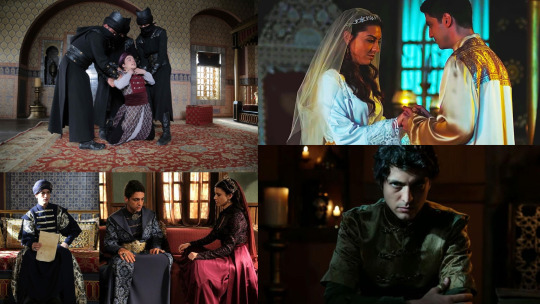
Famous campaign and return
Osman’s last hope for becoming a popular sultan was his campaign. It started in the spring of 1621 and the targets were the Kingdom of Poland and Lithuania. He left a grieving capital and a pregnant concubine in Istanbul. He could then hope that the grief of the people would be relieved and his concubine would give birth to his heir, which would make him popular.
Osman personally led his army, which exceeded 150,000. It was a very mixed army, as there were about 17,000 Tatars and 13,000 soldiers from Havasalföld and Moldavia in addition to the Ottoman soldiers. Osman's goal was to take Khotin, which seemed like an easy target, as it had an army of only about 65 to 70,000. However, despite the ideas, after more than a month and at least six attempts, the castle still did not fall. Osman made several bad military decisions at that time. The biggest of these was that he refused to admit the defeat, while it was clear that if they did not return home, they would not be able to winter there. And with that, he also risked the lives of his soldiers, which did not increase his declining popularity. Eventually, with great difficulty, he was persuaded to return to the capital.
In January 1622, they returned to the territory of the empire, where Osman behaved as if he had won a great victory. They held ceremonies, sent out letters of victory, and sought to glorify Osman, while the reality was merely a very ugly defeat and a plus battlefield to be supervised. On his way home, Osman spent a little time in Edirne, where he also invited his barely four-month-old son and his mother, Meyl-i Şah (or Ayşe). To show his glory, Osman ordered huge ceremonies where he presented some points of the campaign. Soldiers dressed up during these games mimicked the battle using real weapons. Osman, Meyl-i Şah (Ayşe), and their child, Prince Ömer, also attended the ceremony, which eventually culminated in tragedy. The details are still unclear, but it is certain that Prince Ömer died in January 1622 in Edirne during the ceremony. The four-month-old child was shocked by the sound of fired cannons and weapons and his heart stopped, according to some reports, while others said a stray bullet caused the prince's death.
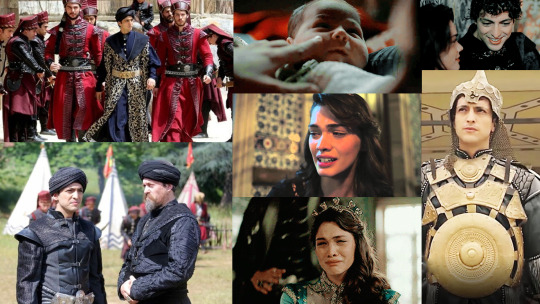
The days of the end
After the failed campaign, Osman only became even more unpopular, and many also blamed him for the death of his son. While Osman blamed the child's mother, Meyl-i Şah (or Ayşe) and he did not allow her to return to Istanbul with him. The child's mother reportedly remained in exile in Edirne for a time (according to others forever) and later lived in the Old Palace. To this day, it is not known for sure whether Ömer's mother was Ayşe or Meyl-i Şah. It was Ayşe who held the rank of Haseki, which would suggest that she was the mother of the child, but it is still not certain at all.
Returning to the capital, Osman began to blame the Janissaries and other military formations for their defeat in the campaign. Wearing disguise he visited the cafes with his men, where he noticed which military leaders were present and said bad things about him, and then punished them. Osman also recognized how dangerous are the Janissaries, which is why, on the advice of the chief black eunuch, Suleiman Agha, Osman wanted to reform the army with Anatolian tribes and get rid of the Janissaries forever. Although rumors circulated about this for a long time, there was no evidence. Then, however, in the spring of 1622, evidence gradually emerged, through issued orders. Based on these orders, it really seemed like Osman wanted to reform the army and even relocate the capital to Cairo, Bursa, or Damascus. After his plan was revealed by Seyhülislam Esad Efendi and Dilaver Pasha, the Grand Vizier, they tried to persuade the Sultan to give up his intentions. However, listening to Suleiman Agha, Osman refused to leave his plans.
By May of that year, it was already clear to everyone that Osman wanted to go to Anatolia. Officially, the trip was explained by his intention to go on a pilgrimage to Mecca via Anatolia. The reality, however, was certainly that, with the help of the Anatolian beylerbeys and tribes loyal to him, he would create his new army and then return with them to end the Janissaries. For the already fiery Janissaries, this was plenty enough and they began a rebellion. The Janissaries and the common people first gathered in Hippodrome Square and then marched to Topkapi Palace. Among other things they demanded the death of the Grand Vizier, the Chief Black Eunuch, Suleiman Aga, and Osman's teacher Ömer Efendi. Osman was increasingly being alerted to the seriousness of the situation, but he did not take the threats seriously and refused to extradite the requested people. Because Osman was not really supported even inside the palace, at the request of the Janissaries, the gate guards immediately let them through, without bloodshed. The goal of the Janissaries with the burglary was to put their old sultan, Mustafa back to the throne. The fact that they wanted Mustafa back, a sultan who was once branded unfit to rule once, suggests several things. On the one hand, it shows well how unpopular Osman was when a mentally ill person was considered more suitable than him; on the other hand, it is likely that the Janissaries were also supported by influential forces such as Halime Sultan, the mother of Mustafa; but the rebellion also showed that no one could play games with the Janissaries without consequences.
After Osman learned that Mustafa was in the hands of the rebels he finally understood the seriousness of the situation, so he agreed to extradite the Grand Vizier and Suleiman Agha, who were immediately lynched by the mob. On the advice of the new Grand Vizier Osman tried to save his position by arranging a meeting with the leaders of the Janissaries to whom he wanted to give money as a bribe. With this, however, Osman only further angered the Janissaries. The sultan in disguise went to the Janissary leaders, where, however, the rebels exposed him. Ali Agha, who was with him and intended to carry out the Sultan's order, was immediately executed by the mob, and the new Grand Vizier, who was also present, had the same fate. The sultan was dragged around the capital in a car, wearing dirty clothes, deprived of wearing anything on his head. A sipahi soldier took pity on the bare-headed sultan and covered his head with his own turban. The sultan was tossed and beaten by the mob. Osman finally started to cry out of humiliation. Various descriptions and legends remain about the humiliations of the Sultan, but Peçevi, the most authentic and reliable source of the period, for example, refused to write details because he believed "these are things that are not appropriate for the pen to write down and not appropriate for the tongue to say.".
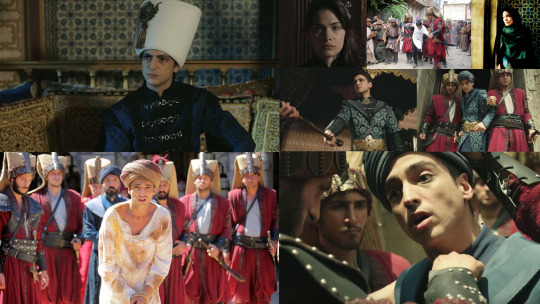
Last hours
After long torture, Osman was taken to the Mosque of the Janissaries, where the new Sultan, Mustafa, his mother, Halime, and his brother-in-law, Davud Pasha, were also present. Osman had hardened the life of Davud Pasa for years, who wanted revenge for it all. Halime Sultan had a similar dislike for him. It was for this reason that Davud soon visited Osman with a string and tried to execute him. In the end, however, the Janissary leaders did not allow the execution of Osman, as the assassination of a former sultan in a mosque was too much for them. Halime and Davud tried to convince them that if they did not kill him there and then, he could manage to escape and then execute them all. However, they failed to convince the leaders of the Janissaries. Thus, Osman was eventually taken to the Yedikule Prison and then strangled there with the Sultan's permission, but without a legal fetwa from the Seyhülislam.
According to legend, Osman fought so hard that the executioner (with Davud in the lead) beat him, paying special attention to his private parts, and then the helpless sultan was strangled. After his death, his body was mutilated, his ear was cut off, and was taken to Halime Sultan to prove that Osman was indeed executed. The murdered sultan was eventually buried in the mosque complex of his father, Sultan Ahmed, and lies at the feet of his father's sarcophagus. He died on the evening of May 20, 1622, at the age of 17 and a half. He was the first sultan to be executed and it was the first execution carried out on a member of a dynasty where the victim was killed with extraordinary brutality and then even mutilated.
Many factors may have contributed to his brutal death. Osman was just a teenager, without the proper experiences, he came to power too young. True, Ahmed I was of a similar age when he began his reign, but behind him there stood his mother, and there was no other heir instead. Meanwhile, there was almost no one behind Osman and he had several rivals. In addition, Ahmed’s advisors and himself had the right political sense so they were able to shape situations well, gaining people’s love. However, with the accumulation of errors, Osman constantly lost from his already not so big popularity. There was another factor that helped Osman get to the tragic end. Several contemporary sources have reported that the sultan dressed very simply and often behaved like the common people. And with that, he ceased to be an almost divine, admired creature that people expected from the Sultan. An interesting fact is that after the dethronement of Osman, the commoners were amazed by even the mad Mustafa, as he truly looked majestically, wonderfully in his fancy dress, as opposed to Ottoman, who, according to contemporary accounts, sometimes looked almost like a "vagabond." Osman thus became a victim of his age, his own nature, and circumstances. It is easy to judge him, as his faults are clear, but let us not forget that Osman was nothing but a gullible, orphaned teenage boy who made bad decisions and trusted in bad people.
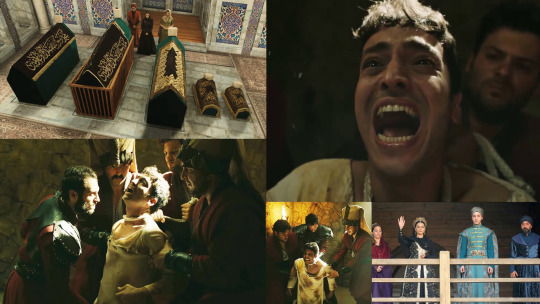
Used sources: G. Piterberg, An Ottoman Tragedy: History and Historiography at Play; F. Ciçek - An Examination of Daily Politics and Factionalism at the Ottoman Imperial Court in relation to the Regicide of Osman II (r. 1618-1622); C. Finkel - Osman’s Dream: the History of the Ottoman Empire; Y. Öztuna - Sultan Genç Osman ve Sultan IV. Murad; N. Sakaoğlu - Bu Mülkün Kadın Sultanları; B. Tezcan - The Debut of Kösem Sultan’s Political Career; G. Börekçi - A Queen Mother at Work: On Handan Sultan and Her Regency during the Early Reign of Ahmed I; L. Peirce - The imperial harem; G. Börekçi - Factions and favourites at the courts of Sultan Ahmed I (r. 1603-17) and his immediate predecessors; S. Faroqhi - The Ottoman Empire and the World; C. Imber - The Ottoman Empire 1300-1650; F. Suraiya, K. Fleet - The Cambridge History of Turkey 1453-1603; F. Suraiya - The Cambridge History of Turkey, The Later Ottoman Empire, 1603–1839
* * *
Származása és gyermekkora
Oszmán 1604 novemberében született az ifjú szultán I. Ahmed és egyik ágyasa, Mahfiruze Hatun fiaként. Oszmán születése hatalmas esemény volt a birodalom számára, ugyanis születése előtt mindenki rettegett, hogy Ahmed szultán gyenge egészséges és fiatal kora miatt talán nem lesz képes gyermeket nemzeni. Oszmán világrajövetele után Ahmed személyesen fogadta a pasák gratulációját és azok kezet csókolhattak neki. Ilyenre normális esetben csak a vallási ünnepek során volt lehetőségük. Oszmán születése más szempontból is érdekes, ő volt ugyanis az első első-szülött herceg, aki a birodalmi fővárosban jött világra.
Édesanyja, Mahfiruze nem Ahmed kedvenc ágyasa volt, azonban úgy tűnik, ő is több gyermeknek adott életet. A legtöbb forrás Oszmán édesöccseként tartja számon Bayezid herceget, aki 1612-ben született. Bayezid herceg születését követően nem sokkal édesanyjuk elhunyt. Az elárvult Oszmánt igyekezett szárnyai alá venni Ahmed kedvenc ágyasa és Haszekije, Köszem szultána. Rendszeresen vitte el Oszmánt saját fiával, Mehmeddel együtt kocsikázásokra, pénz osztásokra és a Régi Palotába is, mikor oda utazott Safiye szultánát, Ahmed nagyanyját látogatni. Feljegyezték, hogy ezen kocsikázások alatt Oszmán nagy élvezettel mutatta meg magát és osztott pénzt a rászorulóknak. Köszem motivációja nem csupán az árva Oszmán megsegítése és nevelése volt. Köszem saját fiait kívánta megóvni azzal, hogy úgy neveli Oszmánt, mintha az ő gyermeke lenne. Azt remélte, Oszmán később így nem fogja kivégeztetni féltestvéreit. Köszem elképzelése reális volt és talán sikerült is volna, Ahmed azonban közbe szólt. A szultán nem nézte jó szemmel a kapcsolatot kedvence és fia között, ez ugyanis szerinte illetlen volt és egyébként is jól ismerte Köszem természetét, ezért igyekezett fiát távol tartani tőle. Oszmán innentől kezdve nem találkozhatott nyilvánosan Köszemmel, nem tölthetett el vele időt, egyedül dajkája és tanítója álltak mellette.

A változás
Ahmed szultán mindig is gyenge egészségű volt, azonban az 1610-es évek második felére ez egyre tovább romlott, míg 1617 novemberében belehalt betegségébe. Oszmán ekkor töltötte be 13. életévét. Alig volt fiatalabb, mint Ahmed, mikor 1603-ban trónra került, így nem volt ördögtőlvaló a gondolat, hogy őt ültessék a trónra. Azonban volt egy tényező, ami ellene szólt. A testvérgyilkosság tövénye évszázadok óta kötelezte a szultánokat arra, hogy a rend fenntartása érdekében meggyilkolják saját testvéreiket, amikor elfoglalják a trónt. Ahmed szultán azonban nem végeztette ki féltestvérét, Musztafa herceget. A népnek ez igen kedvérevaló volt, hiszen kezdek megcsömörleni a testvérgyilkosság törvényétől. Épp emiatt, mindenki érdeke az volt, hogy az apáról fiúra való öröklés helyett egy más rendszer kezdődjön meg. Eszerint pedig a legidősebb élő hercegnek kell a trónt elfoglalni, a többieket pedig nem kivégeztetni. Ez a legidősebb herceg pedig nem Oszmán volt, hanem Ahmed öccse, Musztafa. Musztafa azonban mentálisan beteg volt, így tulajdonképpen nem volt alkalmas ő sem az uralkodásra.
Oszmán nem csak kora miatt volt azonban alkalmatlan jelölt. Mivel árva volt és túl fiatal ahhoz, hogy saját támogatói legyenek, igencsak elszigetelt volt, nem voltak befolyásos támogatói. Ezzel szemben Musztafa hercegnek ott volt az édesanyja, sógorai, akik befolyásos pasák voltak. És ott volt Köszem szultána legidősebb fia is, Mehmed, aki mögött a néhai szultán kedvenc ágyasa, a befolyásos és népszerű Köszem állt. Oszmán pedig egyedül volt dajkájával és oktatójával ilyen jelentős emberek között a maga 13 évével. Dajkája bármennyire szerette volna és Oszmán bármenynire is igyekezett az anyáknak járó jogokkal kitüntetni, akkor sem válhatott elég befolyásossá, hogy érdemben segíthesse a herceget.
A vallási vezető, Seyhülislam Esad Efendi és a palota főeunuchja, Haci Musztafa Aga végül sikerrel győzték meg a népet, divant és katonaságot arról, hogy a legjobb döntés a legidősebb herceget, Musztafát a trónra ültetni, hiszen így végre megváltozhat a trónöröklés és örökre leszámolhatnak a testvérgyilkosság törvényével. Olybá tűnik, hogy Oszmán herceg ezt a döntést sosem bocsátotta meg a Seyhülislamnak és az eunuchnak.

Zavaros trónralépése
Keveset tudunk arról, hogy pontosan mi történt Musztafa rövid uralkodása alatt Oszmánnal. Annyi bizonyos, hogy fiú testvéreivel együtt ő is elzártan élt a Topkapi Palotában. Musztafa szultán teljesen alkalmatlan volt az uralkodásra, mentális betegsége egyre jobban elhatalmasodott rajta, így végül egyre többen kezdtek ellene szövetkezni. A korábban trónra juttatásán dolgozó Haci Musztafa Aga volt az, aki ismételten királycsináló szerepben akart tetszelegni. Musztafa Aga az egyik divan megbeszélés előtt bezárta lakrészébe a szultánt és azonnal Oszmán hercegért sietett és őt vezette be a divan elé, mint új szultánt. A puccs sikerült, Musztafát trónfosztották és elzárták, Oszmánból pedig szultán lett. Bár Haci Musztafa volt az, aki tulajdonképpen trónra juttatta Oszmánt, a herceg nem bocsátotta meg neki azt, hogy Ahmed halála után nem mellette állt és azonnal Egyiptomba száműzte az eunuchot, ahol néhány évvel később elhalálozott.
Oszmán végül 1618 február 26-án vált szultánná a már említett divan gyűlés alatt. Az új hagyományokhoz alkalmazkodva nem próbálta meg kioltani nagybátyja vagy testvérei életét. Természetesen azonban erre esélye sem lett volna, hiszen továbbra sem voltak befolyásos támogatói. Oszmán árvaként tulajdonképpen csak tanítójára hagyatkozhatott, Ömer Efendi azonban nem volt különösebben népszerű sem a divanban sem a nép köreiben. Oszmánnak muszáj volt mielőbb népszerűvé tenni magát és támogatókat szerezni.

Uralkodása
Oszmán első tevékenysége a bosszúhadjárat volt és a birodalom stabilizálására is tett törekvéseket. Haci Musztafa Aga száműzetésével egy időben a Seyhülislam jogköreit is leszűkítette (és nagyrészét átruházta tanítójára, Ömer Efendire), tevékenységét erősen korlátozta, amiért ő is Musztafa trónra juttatását támogatta 1617-ben. Hasonló sorsra jutott a korábbi nagyvezír Kayseriyeli Halil Pasa, a másodi vezír Sofu Mehmed Pasa is, akiket lefokozott. Bár Davud Pasa, Musztafa szultán sógora a teljes lefokozást megúszta, de pusztán rokoni kapcsolatai miatt Oszmán állandó jelleggel megkeserítette életét. Ezek a tevékenységek jól mutatják Oszmán korából adódó hiányosságait. Döntései inkább tűnnek egy sértett kamasz, hirtelen elhatározásának, mint megfontolt szultáni döntéseknek.
Szintén korából és árvaságából adódott, hogy naivan bedőlt a behízelgéseknek. Így lett végül a korábbi főtengernagy Güzelce Ali Pasa a nagyvezíre. Oszmán észre sem vette, hogy a Pasa tulajdonképpen helyette uralkodik, Oszmán szavai csupán Ali Pasa visszhangjaként csengtek. Güzelce Ali Pasa elérte azt is, hogy Oszmán oktatóját, az általa igen nagyra tartott és szeretett Ömer Efendit eltávolítsa a fővárosból. Ömer Efendi 1621 márciuásig nem térhetett vissza Mekkából, amikor is Güzelce Ali Pasa elhalálozott.
Eleinte Oszmán nem volt egyértelműen gyűlölt szultán, mert bár sokan nem kedvelték, a katonák még nem döntötték el, hogy kedvelik vagy sem. A katonáknak imponált, hogy Oszmán maga kíván hadjáratot vezetni, azonban tapasztalatlansága, fiatal kora és az erősen megüresedett kincstár árnyalta ezt a döntését is. A hadjáratra 1621 tavaszán terveztek elindulni. Oszmán azonban koránt sem érezte hatalmát elég szilárdnak ahhoz, hogy elhagyja a fővárost, miközben nála alig fitalabb öccse, a 16 éves Mehmed (Köszem fia) ott marad. Oszmán (vagy inkább támogatói) félt(ek), hogy távollétében Köszem szultána trónra juttatja Mehmed herceget. Erre megoldást jelenthetett volna, ha Oszmán magával viszi Mehmedet is a hadjáratra, azonban sokkal drasztikusabb megoldást választott. 1621 januárjában (éppen 400 évvel ezelőtt) kivégeztette Mehmedet. A testvérgyilkosság újraéledése erősen megrengette a birodalmat. Szinte kivétel nélkül mindenki elítélte, sőt volt, aki gyáva döntésnek titulálta az ártatlan herceg kivégzését. A gyilkosság előtt Oszmán természetesen kérte a Seyhülislam Esad Efendi engedélyét, mint ahogy ez minden ilyen kivégzésnél szükséges volt. Esad Efendi jogtalannak titulálta a kivégzést, megtagadta, hogy legalizálja azt, akárhogyan is erőszakoskodott Oszmán. Végül a szultán a második legmagasabb vallási előkelőséghez, a megvesztegethető Kemaleddin Efendihez ment, aki engedélyt adott a kivégzésre.
Tovább tetézte Oszmán baját, hogy egy mini jégkorszak köszöntött be ekkor, Isztambult 15 napi erős havazás sulytotta. A rendkívüli időjárás következtében több ezren meghaltak, a Boszporusz teljesen befagyott, gyalog át lehetett menni Beşiktaş és Üsküdar között. A nép egyértelműen Allah haragját látta az időjárási esemény mögött, úgy vélték Oszmánt kívánja így büntetni, amiért megölette ártatlan testvérét. Oszmán bűnössége Mehmed meggyilkolásában kétségtelen, azonban nem egyértelmű, hogy saját ötlete volt vagy valaki nyomására történt. Utóbbi verziót erősíti, hogy Oszmán maga trónralépése után rendszeresen látogatta Köszem szultánát a Régi Palotában, tehát igyekezett vele jó viszonyt ápolni, Köszem pedig igyekezett nem bosszantani az ifjú szultánt, hogy ezzel is óvja saját gyermekei életét.
Oszmán minden áron igyekezett magának támogatókat gyűjteni, akár kényszerrel is. Erre tett kísérletet akkor is, amikor a Seyhülislam Esad Efendi lányát apja nemtetszése ellenére feleségül vette 1621 márciusában. Akile Hatunon keresztül Oszmán úgy gondolta, magához láncolhatja a Seyhülislamot. Erre Mehmed herceg kivégzése után különösen nagy szüksége volt. Mások úgy vélik, Oszmán névrokonát, az Oszmán Ház alapítóját, I. Oszmánt kívánta utánozni, aki szintén egy müfti lányát vette feleségül. Házasságuk valószínűleg csupán politikai volt és Akile sosem lépett be a hárembe. Mások szerint a nászt elhálták és született két gyermekük is, Zeynep és Mustafa. Akárhogyan is ez a házasság szokatlan volt, hiszen a szultánok évszázadok óta nem házasodtak szabad asszonyokkal, különösen nem ilyen befolyásos családból valókkal. Bár Oszmán célja a házassággal hatalmának megszilárdítása volt, népszerűségét erősen csökkentette, hogy a hagyományoknak nem megfelelő módon kötött házasságot.

Híres hadjárata és a visszatérés
Oszmán utolsó reménye arra, hogy népszerű szultánjá váljon a hadjárata volt. 1621 tavaszán el is indult. Hadjárata célpontjául a Lengyel és Litván Királyságok területét választotta. Gyászoló fővárost és egy várandós ágyast hagyott hátra Isztambulba. Azt remélhette ekkor, hogy a gyász visszatéréséig enyhül, ágyasa pedig világra hozza majd örökösét, amely népszerűvé fogja őt tenni.
II. Oszmán személyesen vezette seregét, amely a 150 ezer főt is meghaladhatta. Igen vegyes összetételű sereg volt ez, hiszen mintegy 17 ezer tatár és 13 ezer havasalföldi és moldvai katona is volt az oszmán katonák mellett. Oszmán célja Khotin bevétele volt, amely könnyű célpontnak tűnt, hiszen csupán mintegy 65-70 ezer fős sereggel rendelekzett. Azonban az elképzelések ellenére, több, mint egy hónap és legalább hat próbálkozás után a vár továbbra sem esett el. Oszmán több rossz katonai döntés is hozott ekkor. Ezek legnagyobbika volt, hogy nem volt hajlandó elismerni a vereséget, miközben egyértelmű volt, hogy ha nem indulnak haza, nem fognak tudni a területen kitelelni. Ezzel pedig katonái életét is kockáztatta, ami nem növelte egyre csökkenő népszerűségét. Végül nagy nehézségek árán meggyőzték róla, hogy térjenek vissza a fővárosba.
1622 januárjában értek vissza a birodalom területére, ahol Oszmán úgy viselkedett, mint aki hatalmas győzelmet aratott. Ünnepségeket tartottak, győzelmi leveleket küldtek szét és igyekeztek Oszmán dicsőségét híresztelni, miközben a valóság egy igen csúfos vereség volt csupán és plusz egy hadiszíntér, melyet felügyelni kellett. Hazafelé tartva Oszmán Edirnében időzött egy keveset, ahová alig négy hónapos kifiát és annak anyját, Meyl-i Şaht (vagy Ayşét) is magához hívatta. Oszmán, hogy dicsőségét fényezze, hatalmas játékokat rendelt el, ahol bemutatta a hadjárat egyes pontjait. Ezen játékok során beöltözött katonák valódi fegyvereket használva imitálták a csatát. Oszmán, Meyl-i Şah (vagy Ayşe) és gyermekük, Ömer herceg is részt vett ezen az ünnepségen, mely végül tragédiába torkollott. Máig tisztázatlanok a részletek, az azonban bizonyos, hogy Ömer herceg 1622 januárjában, Edirnében, az ünnepség során életét vesztette. A négy hónapos gyermek egyes beszámolók szerint sokkot kapott a dördülő ágyúk és fegyverek hangjától és megállt a szíve, mások szerint pedig egy eltévedt golyó okozta a herceg halálát.

A vég napjai
Oszmán a sikertelen hadjárat után csak még népszerűtlenebb lett, emellett sokan őt okolták fia halála miatt is. Oszmán pedig minden bizonnyal a gyermek anyját, Meyl-i Şaht (vagy Ayşét), ugyanis nem engedte neki, hogy visszatérjen vele Isztambulba. A gyermek anyja a beszámolók szerint egy ideig (mások szerint végleg) Edirnében maradt száműzetésbe, később a Régi Palotában élt. Máig nem tudni biztosan, hogy Ömer édesanyja Ayşe vagy Meyl-i Şah volt. Ayşe volt, aki a Haszeki rangot viselte, ez arra utalna, hogy ő volt a gyermek anyja, ám ez nem bizonyos.
Oszmán a fővárosba visszatérve a janicsárokat és más katonai alakulatokat kezdte hibáztatni a hadjáraton elért vereség miatt. Álruhába bújva embereivel a kávézókat járta, ahol kifigyelte mely katonai vezetők vannak jelen és mondanak rosszat róla, majd megbüntette őket. Oszmán felismerte azt is, milyen veszélyes társaság a janicsároké, emiatt, a fő fekete eunuch, Szulejmán aga tanácsára Oszmán Anatóliai törzsekkel kívánta megreformálni a hadsereget és a janicsároktól örökre meg kívánt szabadulni. Pletykák ugyan hosszasan keringtek erről, bizonyíték sokáig nem volt. Aztán azonban, 1622 tavaszán fokozatosan kerültek ki bizonyítékok kiadott parancsokról. Ezen parancsok alapján tényleg olybá tűnt, hogy Oszmán a hadsereget meg akarja reformálni, sőt még a fővárost is át kívánja helyezni Kairóba, Bursába vagy Damaszkuszba. Miután terve kiderült a Seyhülislam Esad Efendi és Dilaver Pasa, a nagyvezír igyekeztek meggyőzni a szultánt, hogy hagyjon fel szándékaival. Oszmán azonban Szulejmán Agára hallgatva nem volt hajlandó letenni terveiről.
Az év májusában már mindenki számára nyilvánvaló volt, hogy Oszmán Anatóliába akart indulni. Hivatalosan az utazást azzal magyarázták, hogy Anatólián keresztül Mekkába szándékozik menni zarándoklatra. A valóság azonban minden bizonnyal az volt, hogy a hozzá hűséges Anatóliai beglerbégek és törzsek segítségével új hadseregét létrehozza, majd velük visszatérve leszámoljon a janicsárokkal. Az egyébként is tüzes janicsároknak ez bőven elég volt és lázadást kezdtek. A janicsárok és a köznép először a Hippodrom téren gyülekeztek majd a Topkapi Palotához masíroztak. Többek között a nagyvezír, a fő fekete eunuch, Szulejmán Aga és Oszmán tanítója, Ömer Efendi halálát követelték. Oszmánt egyre többen figyelemztették a helyzet súlyosságára, azonban nem vette komolyan a fenyegetéseket és megtagadta, hogy kiadja a kért embereket. Mivel Oszmánt még a palotán belül sem igazán támogatták, a janicsárok kérésére a kapu őrök azonnal átengedték őket, vérontás nélkül. A janicsárok célja a betöréssel az volt, hogy Musztafa személyében újra a trónra ültessék régi szultánjukat. A tény, hogy az egyszer már alkalmatlannak bélyegzett Musztafát akarták trónra ültetni, több dologra is utal. Egyrészt jól mutatja, Oszmán mennyire népszerűtlen volt, ha egy mentálisan beteg embert is alkalmasabbnak tartottak nála; másrészt valószínűsíti, hogy a janicsárokat befolyásos erők is támogatták, mint például Halime Sultan, Musztafa édesanyja; de a lázadás megmutatta azt is, hogy a janicsárokkal senki sem packázhatott követkemények nélkül.
Miután Oszmán tudomást szerzett róla, hogy Musztafa a felkelők kezében van és végre megértette a helyzet súlyosságát beleegyezett, hogy kiadja a nagyvezírt és Szulejmán Agát, akiket a csőcselék azonnal meglincselt. Oszmán új nagyvezíre tanácsára úgy próbálta menteni helyzetét, hogy találkozót beszélt meg a janicsárok vezetőivel, akiknek pénzt akart osztani, ezzel lefizetve őket. Ezzel azonban Oszmán csak tovább bőszítette a janicsárokat. A szultán álruhában a janicsár vezetőkhöz ment, ahol azonban a lázadók leleplezték. A vele együtt lévő és a szultán parancsát végrehajtani szándékozó Ali Agát a csőcselék azonnal kivégezte és a szintén jelenlévő új nagyvezír is hasonlóan végezte. A szultánt egy kocsiban hurcolták körbe a fővárosban, koszos ruhákat ráadva, megfosztva attól, hogy fején bármit viseljen. Egy szpáhi katona megsajnálta a fedetlen fejű szultánt és saját turbánjával takarta el fejét. A szultánt a katonák és a csőcselék megdobálta, ütötte. Oszmán végül könnyekben tört ki a megaláztatástól. Különböző leírások és legendák maradtak hátra az Oszmánt ért megaláztatásokról, azonban a leghitelesebb korabeli forrásként használt Peçevi például megtagadta, hogy részleteket írjon, mert úgy vélte "ezek olyan dolgok, melyek nem illendők a tollnak, hogy leírja és nem illendők a nyelvnek, hogy elmondja".

Utolsó órák
Oszmánt a hosszas tortúra után a janicsárok mecsetjéhez vitték, ahol az új szultán, Musztafa, annak anyja, Halime és sógora, Davud Pasa is jelen voltak. Oszmán éveken át keserítette meg Davud Pasa életét, aki mindezért bosszút kívánt állni. Hasonló ellenszenvvel viseltetett ellene Halime Sultan is. Épp emiatt Davud hamarosan egy zsineggel és embereivel látogatta meg Oszmánt és megpróbálták kivégezni őt. Végül azonban a janicsár vezetők nem engedték Oszmán kivégzését, hiszen egy volt szultán mecsetben történő meggyilkolása sok volt számukra is. Halime és Davud is próbálták meggyőzni őket arról, hogy ha itt és most nem végeznek vele, könnyen lehet, hogy végül felülkerekedik rajtuk és mindannyiukat kivégezteti. Nem sikerült azonban meggyőzniük a janicsárok vezetőit. Így végül Oszmánt a Yedikule börtönbe vitették át, majd ott szultáni engedéllyel megfojtották.
A legenda szerint Oszmán olyan erősen küzdött, hogy a kivégőzi (Davuddal az élen) ezt megelégelve összeverték, intim területeire különös figyelmet fordítva, majd a magatehetetlen szultánt megfojtották. Halála után testét megcsonkították, fülét lemetszették, hogy ezt bemutatva bionyítsák Halime Sultannak, hogy Oszmán valóban meghalt. A meggyilkolt szultánt végül apja, Ahmed szultán mecsetkompelxumában temették el, apja szarkofágjának lábához. 1622 május 20-án este, 17 és fél éves korában érte a halál. Ő volt az első szultán, akit kivégeztek és az első olyan dinasztia tagján végrehajtott kivégzés volt ez, ahol az áldozatot különös brutalitással ölték meg, majd még meg is csonkították.
Brutális halálához sok tényező is hozzájárulhatott. Oszmán kamasz volt, megfelelő tapasztalat nélkül, túl fiatalon került hatalomra. Igaz, I. Ahmed is hasonló korú volt, mikor uralkodni kezdett, ám mögötte ott állt édesanyja, és nem volt helyette más örökös. Oszmán mögött nem állt szinte senki és több vetélytársa is volt. Emellett Ahmed tanácsadói és ő maga is megfelelő politikai érzékkel rendelkeztek, így alkalmasak voltak arra, hogy a helyzeteket jól alakítsák, ezzel elnyerve az emberek szeretetét. Oszmán azonban hibát hibára halmozva folyamatosan csak veszített amúgy sem túlzott népszerűségéből. Volt egy másik tényező is, ami a tragikus véghez segítette hozzá Oszmánt. Több korabeli forrás is beszámolt arról, hogy a szultán igen egyszerűen öltözködött és gyakran viselkedett úgy mint a köznép. Ezzel pedig megszűnt szinte isteni, csodált teremtménynek lenni, amit az emberek a szultántól vártak. Oszmán trónfosztása után még az őrült Musztafát is jobban tudta tisztelni a nép, hiszen a régi-új szultán igazán fennségesen, csodálatosan festett díszes ruháiban, szemben Oszmánnal, aki korabeli beszámolók alapján néha szinte úgy nézett ki, mint egy "csavargó". Oszmán tehát kora, saját természete és a körülmények áldozata lett. Oszmán felett könnyű ítélkezni, hiszen laikusok számára is egyértelműek hibái, azonban ne felejtsük el, hogy Oszmán nem volt más, csak egy hiszékeny, árva kamasz, aki rossz döntéseket hozott és rossz embereknek hitt.

Felhasznált források: G. Piterberg, An Ottoman Tragedy: History and Historiography at Play; F. Ciçek - An Examination of Daily Politics and Factionalism at the Ottoman Imperial Court in relation to the Regicide of Osman II (r. 1618-1622); C. Finkel - Osman’s Dream: the History of the Ottoman Empire; Y. Öztuna - Sultan Genç Osman ve Sultan IV. Murad; N. Sakaoğlu - Bu Mülkün Kadın Sultanları; B. Tezcan - The Debut of Kösem Sultan’s Political Career; G. Börekçi - A Queen Mother at Work: On Handan Sultan and Her Regency during the Early Reign of Ahmed I; L. Peirce - The imperial harem; G. Börekçi - Factions and favourites at the courts of Sultan Ahmed I (r. 1603-17) and his immediate predecessors; S. Faroqhi - The Ottoman Empire and the World; C. Imber - The Ottoman Empire 1300-1650; F. Suraiya, K. Fleet - The Cambridge History of Turkey 1453-1603; F. Suraiya - The Cambridge History of Turkey, The Later Ottoman Empire, 1603–1839
#Osman II#Kösem sultan#mahpeyker kösem#Ahmed I#meleksima#meylisah#meylişah#akile#akile hatun#meylisah sultan#kara davud pasha#davud paşa#halime sultan#Mustafa I#Sehzade mehmed#ömer efendi#şehzade ömer
21 notes
·
View notes
Photo




So now I just had some free time to upload the family trees of the sultan’s we already discussed.
Mehmed III’s family is less known than the others, thats why his whole family tree seems small compared to the others. We must know, that none of the daughters are surely from Halime or Handan. You can read about it longer in their portraits and than you will understand what I’m talking about. Here are the connecting portraits for this family tree:
Mehmed III, Halime, Handan, Mehmed III’s daughters, Ahmed I, Mustafa I
Ahmed I’s family is big and quite well documented. There are still questions of course as in any other sultan’s family. Here are the connecting portraits for this family tree:
Ahmed I, Mahfiruze, Kösem, Ahmed I’s daughters, Osman II, Murad IV, Ibrahim I, Ahmed I’s sons
Osman II died young and had a small family, though there are still questions about him: Its not sure he married Pertev Pasha’s granddaughter and its not sure that Mustafa and Zeynep were his children. Some says Mustafa and Zeynep both were Ahmed I’s children who died infancy. Plus we don’t know for 100% sure if Meylişah was the mother of Şehzade Ömer or Ayşe. So actually nearly nothing is sure in Osman’s family tree. *insert facepalm meme here* Here are the connecting portraits for this family tree:
Osman II, Osman II’s consorts
Murad IV had a big family, but we know quite little about his consorts and sons and sometimes the dates are not valid also. Here are the connecting portraits for this family tree:
Murad IV, Murad IV’s consorts, Murad IV’s daughters
#Mehmed III#handan sultan#halime sultan#Ahmed I#Mustafa I#mahfiruz hatun#mahfiruze sultan#Kösem sultan#Mahpeyker#mahpeyker kösem#şehzade kasim#sehzade bayezid#ibrahim I#Murad IV#Osman II#ayse sultan#fatma sultan#abide sultan#hanzade sultan#atike sultan#Meylisah sultan#şehzade ömer#akile hatun#Pertev Paşa#aya hatun#haseki ayse sultan#sanavber#esmehan kaya
48 notes
·
View notes
Note
Hi again! If a concubine gave the Sultan a son and the boy died, why would the consort not usually be given another chance? Or usually be married off like non-reproductive favorites or mothers of daughters? Was there a religious rule forbidding it? Or was this more of a cultural practice? Were similar rules why the widowed hasekis of Osman II and Murad IV seemed to have stayed unwed? Thanks!
Well... they were given another chance. Afife Kadın, Mustafa II's consort, had five princes who died in infancy and a princess who reached adulthood. Presumably, she went back to Mustafa II's bed even after one of her sons' death. Infant mortality was something that they had to deal with at the time, so it's not like consorts who lost children were ostracized or something.
But, I guess it also kind of depended on the sultan: Meylişah Hatun was blamed by Osman II for the accidental death of her son, this is why he didn't want to see her again. Another sultan — Mustafa II, for example — could have called her back to his bed on the grounds of affection (and I think this is what he did with Afife Kadın, who said that the sultan loved her)
Also, no. Mothers of daughters were not usually married off. They were mothers of imperial princesses. It was not standard practice for mothers of imperial children to re-marry, but it happened. We know about Afife Kadın's second marriage because she told Lady Wortley Montagu her story. But a lot of former consorts were not intimated to find themselves new husbands after their sultan's death. It's something that Ahmed III specifically asked of his brother's harem— for whatever reason he had.
As for your question about Osman II's and Murad IV's hasekis: I don't think there were particular rules against remarriage for haseki sultans. Hümaşah Sultan had been the sultan's legally wedded consort but she still re-married after the death of her only (recorded) child, Şehzade Orhan. Maybe those haseki sultans had children alive at their sultan's deaths: the Ottomans tended not to divide mothers and their small children (Halime saved from execution in 1603 because of Mustafa's tender age is a perfect example of this). Afife Kadın only re-married because her daughter was an adult (or of marriageable age anyway)
#ask post#ask: ottoman history#ottoman harem#afife kadin (mustafa ii)#meylisah hatun#haseki humasah sultan#haseki ayse sultan i#haseki ayse sultan ii#buffyboleyn
30 notes
·
View notes
Note
Favorite consort of each sultan?
I gotta be honest, I don't have a favourite for each sultan, especially the early ones... that's really not my period at all. But I tried!!
Osman Gazi: ? I truly have no idea. Both Mal and Rabia Hatun are indifferent to me
Orhan Gazi: Theodora Kantakuzene
Murad I: ? I have no idea
Bayezid I: Maria Olivera Despina Hatun for sure
Çelebi Mehmed: no idea
Murad II: Mara Branković
Mehmed II: Çiçek Hatun and Sitti Mükrime Hatun
Bayezid II: I don't know
Selim I: well, Ayşe Hafsa of course LOL
Süleyman I: Hürrem (LOL)
Selim II: Nurbanu
Murad III: Safiye
Mehmed III: both Handan and Halime
Ahmed I: Kösem LOL
Mustafa I: had no consorts
Osman II: poor Meylişah Hatun, I feel so bad for her
Murad IV: ?? no idea
Ibrahim Han: Hümâ-Şâh Sultan and Hatice Muazzez Sultan
Mehmed IV: Emetullâh Rabî'a Gül-nûş Sultan and Afife Hatun/Kadın
Süleyman II: no idea
Ahmed II: Haseki Rabia Sultan
Mustafa II: Afife Kadın
Ahmed III: no idea tbh
Mahmud I: no idea
Osman III: no idea
Mustafa III: Mihr-i Şâh Sultan
Abdülhamid I: Hadîce Ruh-şâh Başkadınefendi
Selim III: Refet Kadın, only because she tried to prevent his assassination. It's something that wasn't expected of her so that kind of moved me
Mustafa IV: no idea
Mahmud II: Hacıye Pertev-Piyâle Nev-fidân Başkadınefendi and Bezmialem Sultan
Abdülmecid I: Servet-sezâ Başkadınefendi, Ayşe Ser-firâz Hanımefendi and Bezmiara Kadın
Abdülaziz Han: Gevheri Kadınefendi
Murad V: Meyl-i Servet Kadınefendi
Abdülhamid II: Nâzik-edâ Başkadınefendi, Bedr-i Felek Başkadınefendi
Mehmed V: Nâz-perver Kadınefendi
Mehmed VI: Emîne Nâzik-edâ Başkadınefendi and Inşirâh Hanımefendi
22 notes
·
View notes
Note
Osman II's + harem and children
Consorts:
Akile Hatun: daughter of Şeyhülislam Mehmed Esadullah Efendi, Osman II married her a couple of months before his deposition, maybe on 19 March 1622. Privy purse registers show that she never entered the harem, but the Venetian ambassador Giustinian reported that Akile had apartments set up for her in the Old Palace and that Osman II went there to consummate the marriage. The following day, he made his viziers bow to her and kiss the hem of her skirts. Possibly in March 1627, she married the poet Ganîzâde Nâdiri Efendi.
Haseki Ayşe Sultan: Osman II’s haseki, her presence is confirmed by Privy purse registers from 1619 to 1640. She seems to have died in 1641 at the age of 34. According to Öztuna, she was not a haseki but the granddaughter of Pertev Paşa and thus a free woman. Other historians claim that they were two different consorts.
Meylişah Hatun: also called Meylikaya or Meleksima. She is thought to be Şehzade Ömer’s mother. If she was the prince's mother, after his death she fell in disgrace as Osman didn't want to see her anymore.
Unnamed consort: granddaughter of Pertev Paşa, according to Sakaoğlu Osman II maried her on 7 February 1622.
Children:
Şehzade Ömer: born on 20 October 1621, he tragically died in January 1622 during the celebrations for the Polish campaign. It is disputed how he actually died: some say he was too scared of the fireworks, others that he was accidentally shot during the recreation of a battle.
Şehzade Mustafa: twin of Zeynep Sultan and born posthumous, according to Öztuna, in November 1622 but died in 1623. He was buried in the mausoleum of Ahmed I
Zeynep Sultan: twin of Şehzade Mustafa, thus born posthumously in November 1622. There is no precise date of death, but she may have died in 1623 too. She was buried in the mausoleum of Ahmed I.
#anon#ask post#ask: ottoman history#osman ii#akile hatun#haseki ayse sultan i#meylisah hatun#unnamed consort of osman ii#sehzade omer son of osman ii#zeynep sultan daughter of osman ii#sehzade mustafa son of osman ii
19 notes
·
View notes